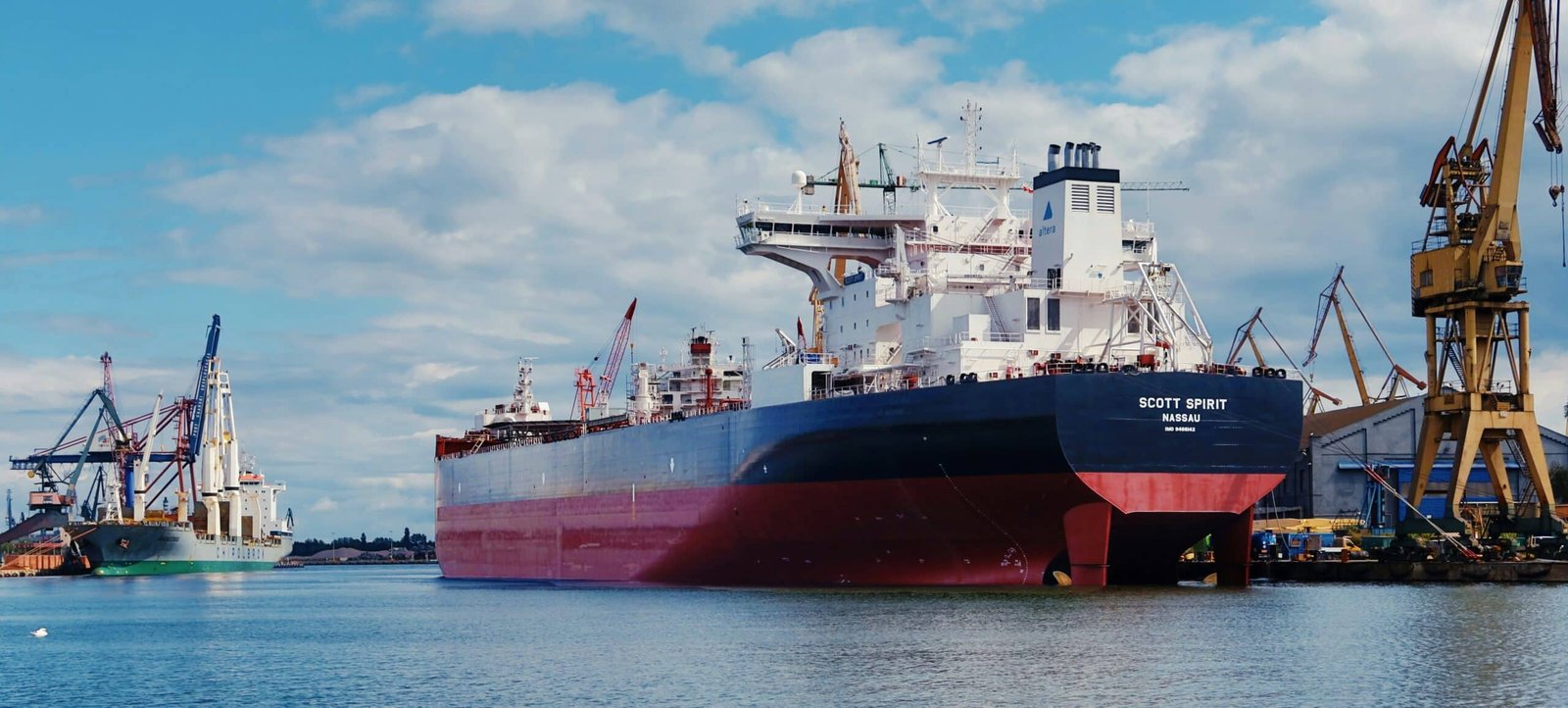Shipping from China to Canada Price 2025: Complete Cost Breakdown & Money-Saving Strategies
By Guanwutong / October 30, 2025
If you’re importing goods from China to Canada, you’ve probably searched for shipping costs and found wildly different answers. One freight forwarder quotes $2,500 for a 20-foot container, another says $3,800. One carrier charges $6/kg for air freight, another demands $12/kg. So which is accurate? And more importantly—what are you actually paying for?
As a freight forwarding professional with over a decade of experience facilitating China-Canada trade, I can tell you that price confusion isn’t accidental. Most importers don’t fully understand what they’re paying for, which means they either overpay significantly or choose the wrong shipping method entirely. In this guide, I’m pulling back the curtain on 2025 shipping from China to Canada pricing, revealing the hidden fees nobody talks about, and showing you exactly how to negotiate better rates.

The Problem: Why Shipping Quotes Vary So Wildly (And Why You’re Confused)
Let’s start with the uncomfortable truth: the shipping industry deliberately obscures pricing.
Here’s what happens when you request a quote:
A freight forwarder emails you: “20ft container to Vancouver: $2,800.” That’s it. No breakdown. No explanation of what’s included. Then another forwarder says, “$2,800 all-in, everything included.” But they’re not the same thing.
One price includes terminal handling charges (THC), fuel surcharges, and documentation fees. The other doesn’t. You’ll discover this during the booking process—or worse, when you get an invoice for $3,400 instead of $2,800.
This is the central problem: Shipping prices are rarely truly “all-in.” They’re structured with base rates, fuel surcharges, port fees, customs fees, and dozens of other charges that aren’t obvious upfront.
Why This Happens
The shipping industry operates with three types of costs:
1. Variable Costs — Ocean freight rates fluctuate based on market demand, fuel prices, and port congestion. A 20ft container to Vancouver might cost $2,200 in February (off-season) but $3,500 in September (peak season). That’s a 60% difference for the identical service.
2. Fixed Costs — Terminal handling charges, documentation fees, and customs clearance aren’t negotiable. They’re determined by port authorities and government agencies. You’ll pay $150-250 for terminal fees regardless of when you ship.
3. Hidden Costs — This is where most importers get blindsided. Fuel surcharges (typically 5-15% of base rate), port congestion charges ($50-150 per box), storage fees ($5-15/CBM per day after 3 days), and other unexpected fees appear on your final invoice.
The result? You can’t accurately compare quotes because you’re not seeing the complete picture.
Solution 1: Understanding Sea Freight Pricing for China-Canada Routes (2025)
Ocean freight is the most economical option for large-volume imports—but only if you choose the right service level.
Current Sea Freight Rates: FCL Pricing
Here’s the reality of 2025 pricing for Full Container Load (FCL) service:
| Route | 20ft Container | 40ft Container | Transit Time | Status |
|---|---|---|---|---|
| Shanghai → Vancouver | $2,300-$2,900 | $4,200-$5,200 | 18-24 days | Most Competitive |
| Shenzhen → Vancouver | $2,400-$3,100 | $4,300-$5,500 | Medium18-24 days | Alternative |
| Shanghai → Toronto | $2,900-$3,600 | $4,600-$5,900 | 25-32 days | Includes Transload |
| Ningbo → Montreal | $3,100-$4,200 | $4,900-$6,200 | 26-35 days | Less Competitive |
| Guangzhou → Vancouver | $2,100-$2,900 | $3,900-$5,100 | 16-22 days | Fastest Option |
Key insight: Guangzhou to Vancouver is fastest. Shanghai to Vancouver is cheapest due to schedule frequency. Toronto and Montreal routes involve transloading or intermediate stops, which adds 3-7 days and $500-800 to your total cost.
When LCL (Less Than Container Load) Makes Sense
LCL pricing runs $80-150 per cubic meter depending on route, season, and port. For cargo under 12 CBM, LCL is often more economical than FCL. But here’s the catch: you’ll pay additional fees for consolidation ($100-200), deconsolidation ($100-200), and port handling.
Real calculation example:
Scenario: You have 8 cubic meters of merchandise to Toronto.
LCL freight rate: 8 CBM × $110/CBM = $880
Consolidation/deconsolidation: $150
Port handling fees: $100
Customs clearance: $75
Total: $1,205
By comparison, FCL to Toronto starts at $2,900. The break-even point is approximately 15-17 CBM, where FCL becomes cheaper. This is why consistent importers consolidate shipments or negotiate annual contracts for discounted FCL rates.
Seasonal Price Variation: When to Ship
Here’s something most importers don’t realize: timing your shipment can save 25-50% on shipping costs.
January-February (Post-CNY): Lowest prices, fewer containers in circulation. Ship large orders now.
March-May (Spring): Moderate pricing, stable conditions.
June-August (Summer): Beginning of peak season, prices start climbing 10-15%.
September-October (Peak Season): Highest prices. Black Friday and Christmas inventory building drives demand. Expect 30-50% premiums.
November-December (Holiday): Prices stabilize somewhat, but still elevated. E-commerce restocking continues.
For any questions, feel free to contact GWT Shipping. Our team will provide professional, standards-compliant advice tailored to your specific needs.
Solution 2: Air Freight Pricing for Time-Sensitive Shipments
Air freight is expensive—but sometimes it’s the right choice.
Standard Air vs. Express: What’s the Difference?
| Service Level | Cost/kg | Transit Time | Minimum | Best For |
|---|---|---|---|---|
| Standard Air | $5.50-$12.50 | 5-8 days | 100 kg | Regular inventory replenishment |
| Express (DHL/UPS) | $10-$18 | 2-5 days | 1 kg | Urgent orders, emergency stock |
| Sea Freight (LCL) | $55-$150/CBM | 25-40 days | 0.5 CBM | High-volume, low-cost |
The key metric for air freight is volumetric weight: Length × Width × Height ÷ 6,000 = Volumetric Weight. You’re charged for whichever is greater—actual weight or volumetric weight.
Example: You’re shipping 100 pieces of lightweight clothing items.
Dimensions: 120 × 80 × 50 cm per box
Actual weight: 50 kg
Volumetric weight: (120 × 80 × 50) ÷ 6,000 = 80 kg
Billable weight: 80 kg (volumetric is higher)
Cost at $8/kg: $640
This is why lightweight, voluminous products like textiles and cosmetics face crushing air freight costs. Importers of these products almost always use sea freight despite longer transit times.
When Air Freight Actually Makes Economic Sense
Air freight is justified when:
Emergency replenishment: Your inventory is depleted, and losing sales costs more than paying premium freight.
High-value items: Electronics, jewelry, or luxury goods where the product value justifies the shipping premium.
Perishable goods: Food items, pharmaceuticals, or temperature-sensitive products that can’t tolerate 30-day transit times.
Small test orders: You’re testing a new market or product, and volumes don’t justify sea freight infrastructure.
Solution 3: The Hidden Fees Nobody Warns You About
This is where importers hemorrhage money. A $2,800 sea freight quote becomes $3,600+ by the time you see the final invoice.
Complete Cost Breakdown: What You Actually Pay
Let’s trace a real shipment from Shanghai to Vancouver:
| Cost Component | Amount | Who Charges | Negotiable? |
|---|---|---|---|
| Base Ocean Freight | $2,500 | Shipping Line | Somewhat |
| Fuel Surcharge (BAF) | $250 (10%) | Shipping Line | No |
| Port Handling - China | $150 | Port Authority | No |
| Export Documentation | $50 | Freight Forwarder | Yes |
| Port Handling - Canada | $180 | Port Authority | No |
| Port Congestion Fee | $75 | Port Authority | No (situational) |
| Canadian Customs Clearance | $100 | Customs Broker | Yes |
| Last-Mile Delivery (opt.) | $250-400 | Trucking Company | Yes |
| Total Cost (port-to-port) | $3,655 | — | — |
| Total Cost (door-to-door) | $3,905-4,055 | — | — |
The jarring reality? Your $2,500 quote just became $4,000. And that’s without insurance.
Red Flags: Fees That Shouldn’t Appear
If a forwarder charges these, push back:
“China Export Service Fee” — Already included in port fees
“Remote Area Surcharge” — Canada has few truly remote areas with surcharges
“Administrative Processing Fee” — This is vague and often unjustified
“Booking Reservation Fee” — Should be standard, not additional
How to Negotiate Better Pricing
After 10+ years in this industry, here’s exactly how to get better rates:
1. Get three quotes minimum — Not one, three. Pit them against each other.
2. Ask for “all-in pricing” — Every single fee, itemized. If they can’t provide this, walk.
3. Mention volume commitment — “We’re importing monthly. What’s your annual contract rate?” Suddenly, prices drop 5-15%.
4. Ship during off-season — Moving your timeline from September to January saves thousands.
5. Consolidate shipments — Combining shipments from different suppliers to hit 18-20 CBM (optimal FCL point) reduces per-unit costs dramatically.
6. Optimize packaging — Tighter packaging reduces cubic meters, which directly lowers LCL costs.
The Bottom Line: Take Action Now
Here’s what you need to do today:
Collect three competitive quotes — Use platforms like Freightos or contact freight forwarders directly. Request complete, itemized quotes.
Calculate your break-even point — If you’re shipping 12-18 CBM regularly, it’s time to negotiate FCL contracts.
Time your shipments strategically — Avoid September-October peak season. February is your sweet spot.
Request an annual contract proposal — Long-term commitments unlock 10-20% discounts.
Audit your last shipment’s invoice — Challenge any fees you don’t understand. Forwarders often slip charges through that you’ll never notice unless you look.
The difference between paying full retail rates and negotiated rates? $3,000-6,000 per container annually. That’s real money that goes directly to your bottom line.
Want specific guidance on your shipment?
We’re here to help. Reply with your shipment details (origin port, destination, volume, timeline), and we’ll provide a no-obligation breakdown of 2025 costs and optimization strategies for your situation.
Conclusion
Navigating the complexities of shipping costs from China to Canada in 2025 can be overwhelming, but understanding the underlying factors—such as variable, fixed, and hidden costs—can empower you to make more informed decisions. The shipping industry’s lack of transparency often leads to unexpected fees, but with the right knowledge and strategies, you can reduce these surprises and optimize your shipping expenses.
By leveraging seasonal pricing trends, carefully choosing between FCL and LCL, and using air freight strategically, you can save significantly on shipping. Don’t overlook hidden fees, and always ask for detailed, all-in pricing to avoid the pitfalls that many importers face. Negotiating better rates becomes easier when you consolidate shipments, commit to long-term contracts, and optimize packaging to reduce volume.
With the growing competitiveness in the China-Canada trade route and environmental regulations pushing for cleaner, more efficient shipping, 2025 presents a great opportunity to negotiate lower rates and secure better deals. The difference between full retail and negotiated rates can result in savings of thousands per year—money that can go directly to your bottom line.
So, whether you’re planning your next shipment or revisiting your existing strategies, remember: timing, knowledge, and negotiation are key to minimizing your shipping costs and maximizing your profits. If you’re ready to optimize your shipments, reach out to us for a no-obligation cost breakdown and let us help you navigate the best options for your business.
Ready to streamline your China-Canada logistics?

